If you are feeling overwhelmed and unsure of how to strengthen floor joists from beneath, you are not alone. Many homeowners find themselves in this situation, especially when dealing with an older home where the structure is not as strong as it once was.
While it is always best to call a professional for help if necessary, there are some things that can be done yourself safely and effectively without needing heavy-duty tools or advanced carpentry skills.
In this blog post, we will go over what steps need to be taken to make sure that your floors are structurally sound and safe again.
6 Ways to Strengthen Floor Joists
Using Beams or Walls as Support for Floor Joists
One way to make floor joists stronger is by adding beams or walls. This will give the floor more support and make it more stable. If you want to do this, make sure the beam or wall is securely attached to the joists below. This means using screws, nails, or other fasteners to make sure it will not fall down.

Joist Sistering to Strengthen Floor Joists
Using Plywood Strips
To do this, first use a measuring tape and pencil to measure the length of the joist you want to strengthen.
Then cut two pieces of plywood into strips that are slightly wider than your joist measurement. Nail or screw these strips to the top and bottom of your joist. This will make your floor system stronger.
Using Metal Wraps
One way to make floor joists stronger is by wrapping them with metal. Place the metal around the joist and then use nails or screws to hold it in place. This will help support the joist and keep it from getting damaged by moisture or rot.

Using Steel Plates
Steel plates are often used to help strengthen floor joists from beneath. To do this, measure the length of the joist and then attach a steel plate at both ends. This will add extra support and keep your floors from sagging or buckling.
By Blocking of Floor Joists
Blocking of floor joists is a simple way to make them stronger. To do this, add small blocks of wood between the joists where they meet at the beam or wall. This will help support the joists and keep them from sagging or buckling over time.
Other Options
There are other ways to make the floor stronger. You can use metal support brackets or steel I-beams as supports. But you might need help from someone who knows how to do this kind of work if you’re not comfortable doing it yourself. [1]
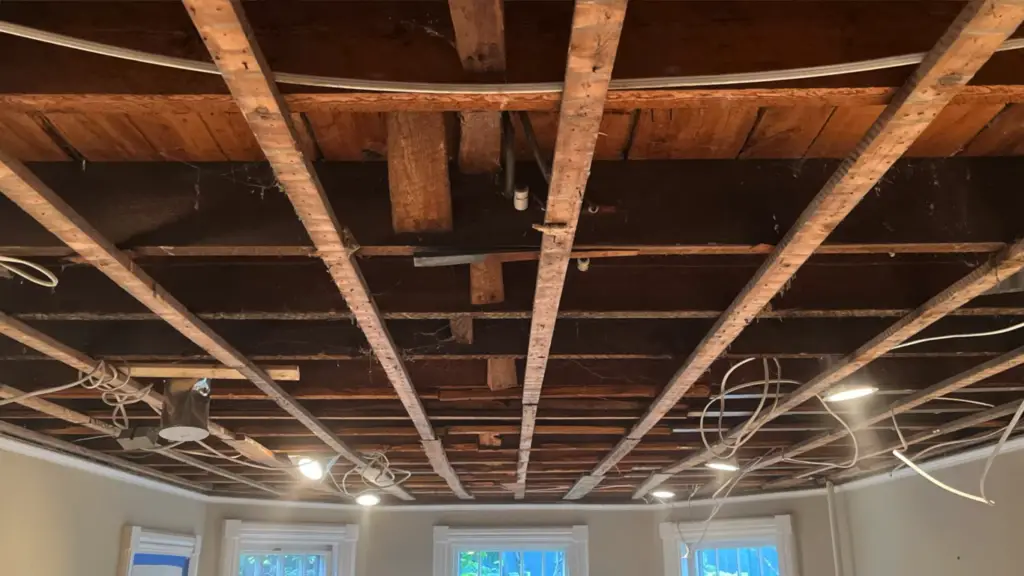
What Causes Sagging Floor Joists?
Sagging floor joists are usually caused by inadequate support from the walls or beams. This can occur if the wall was not strong enough to take the weight of the entire house, or if there were too few supports for the joists.
It can also be caused by an uneven foundation, moisture damage, rot, or insect infestation.
Are Bouncy Floors Dangerous?
Bouncy floors can be dangerous, especially on upper stories of a home. They can cause instability in the structure and create a risk of collapse.
If you notice your floors bouncing more than they used to, call a professional to inspect the floor joists and make recommendations on how to fix it. [2]
Does Drilling Holes in Joists Weaken Them?
Drilling holes in floor joists can weaken them and make the floors unsafe. To avoid this, only drill small pilot holes for screws or nails. Avoid drilling large holes that will compromise the integrity of the joist.
When it comes to strengthening floor joists from beneath, there are many options available. Be sure to do your research and consult a professional before making any changes so you can make the best decision for your home’s safety.
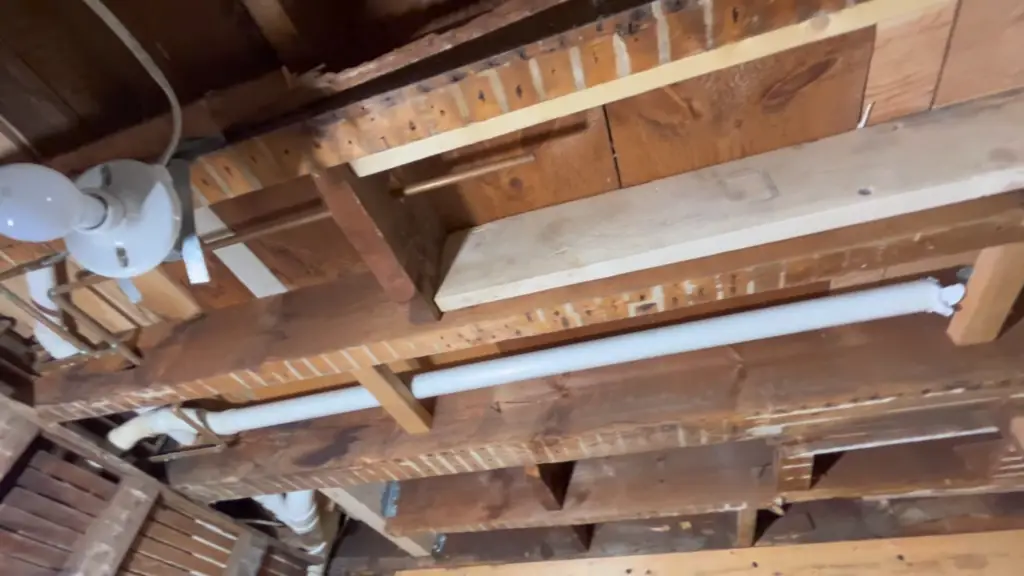
With the right repairs, you can ensure that your floors will be structurally sound and safe again.
How to Inspect Bouncy Floors?
If you suspect that your floors are bouncy, it’s important to inspect them as soon as possible. Start by checking the joists from beneath for signs of rot, insect damage, or other structural issues. If any problems are found, call a professional for an inspection and repair recommendations.
Next, measure the floor’s bounce. To do this, walk across the floor and measure how much it sags or bounces. This will help you determine how serious the issue is.
Finally, inspect the walls and supports around the joists. Make sure that they are strong enough to support the weight of your house, and add extra supports if needed. With these steps, you can ensure that your floors are safe and secure.
Once you have taken the steps necessary to make your floor joists stronger, you need to check them regularly for damage or wear.
Doing this will help you catch any problems early, so you can fix them before they become worse. Keeping up with maintenance and inspections is important for keeping your floors safe. [2]
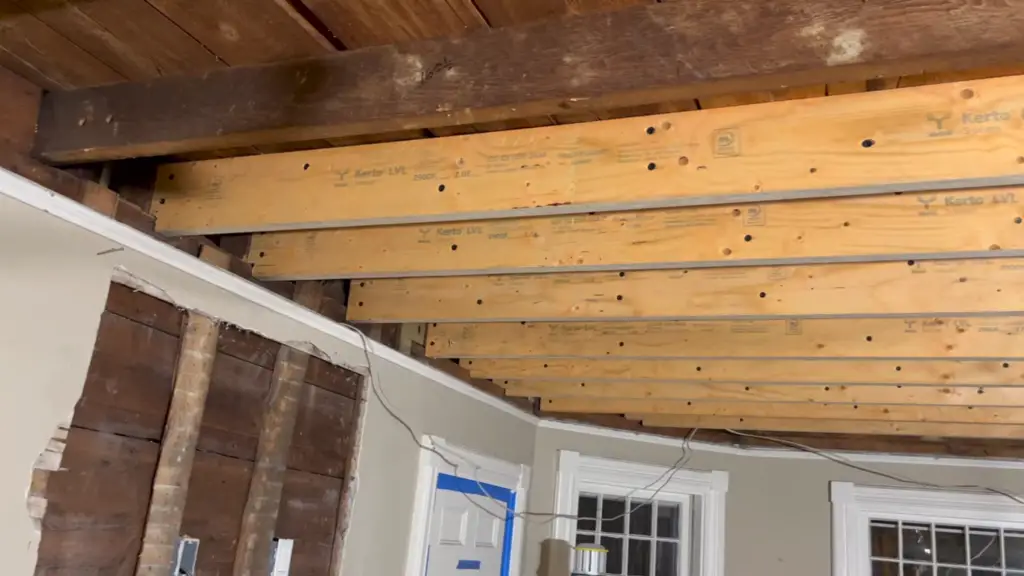
Add a Mid-Span Beam or Wall
If your joists are not strong enough, you can add an extra beam or wall. This will help to keep floors from sagging or buckling over time.
Mid-span beams and walls need to be securely attached and properly aligned with the joists. This will ensure maximum support and stability. If you’re not sure how to do this correctly, it’s best to hire a professional.
How Do You Support a Floor Joist in a Crawl Space?
If you need to support floor joists in a crawl space, the best option is to use columns. These can be made from steel I-beams or wooden posts that are securely attached to the joists and anchored into the ground.
Another option is to use metal brackets with adjustable legs. These will help to evenly distribute the weight of the joists, so you don’t have to worry about them sagging or buckling over time.
No matter which option you choose, it’s important to make sure your joists are properly supported. Installing columns and brackets in the crawl space will help to increase its overall stability and prevent future problems.
It is important to keep the floors in your house strong. This means that the parts of the floor that hold it up (the floor joists) are not weak and will not break easily. You can check your floors regularly to make sure they are still strong. If you see any problems, you can try to fix them or ask a professional for help.
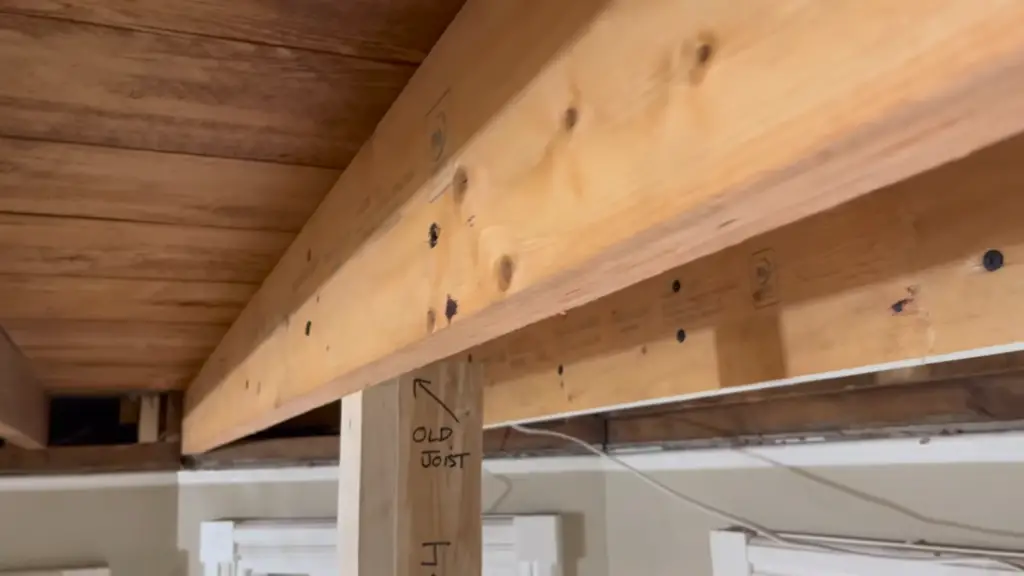
How Do You Jack Up Floor Joists?
If you need to raise the floor joists in your home, you will need to use special jacks. First, measure the distance between the floor and the joist beams so that you know how much lifting is needed.
Next, slide the jack beneath the beam and turn it on until the beam is raised to its desired level. Be sure to use caution when raising the beams and keep a constant watch so you don’t lift them too far.
Once you have jacked up the beam, secure it with extra supports if necessary. This will ensure that it stays in place and doesn’t move or sag over time.
Jacking up floor joists can be a difficult task, but it is essential for preserving the structural integrity of your home. With the right tools and techniques, you can ensure that your floors are safe and secure.
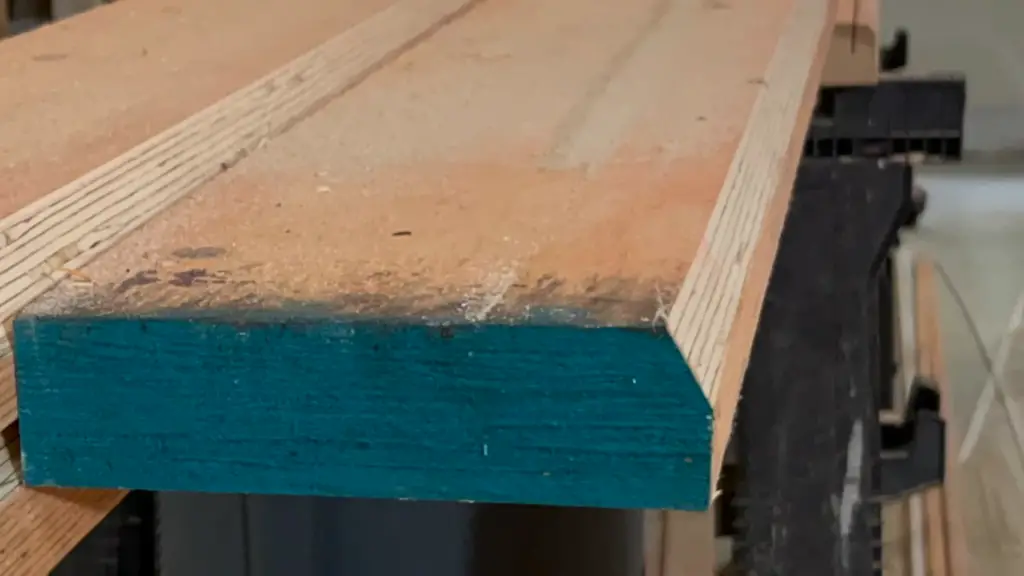
FAQ
Can you reinforce a subfloor from below?
Yes, you can make the floor stronger by adding extra supports and columns from below. This will help to even out the weight on the joists and make it more stable. However, it’s best to ask someone who is a professional for help so they can make sure it is installed correctly.
How do I strengthen floor joists?
To make floor joists stronger, you should check them often for damage or wear. You can also add extra supports and columns from beneath to help evenly distribute the weight and make it more stable.
Finally, installing metal brackets with adjustable legs will help support the joists and keep them from sagging over time.
Do floor joists need to be replaced?
In some cases, it will be necessary to replace floor joists. If the joists are showing signs of wear and tear or damage, they may not be able to hold up the weight of the floor anymore.
It’s important to inspect them regularly for safety and make sure they are in good shape. If they do need to be replaced, it’s best to hire a professional for the job.
It is important to reinforce and strengthen floor joists to keep your floors safe. You can do this by regularly inspecting them, adding extra supports or columns, and possibly replacing them if necessary. With the right tools and techniques, you can make sure that your home is safe and sound.
How do you reinforce rotted floor joists?
If you find that your floor joists are rotting or have already rotted, it is important to take action quickly. If the rot is only present in a small area, you can try to replace the affected section of joist. If the rot has spread throughout the entire joist, however, it will need to be replaced entirely.
Once you have repaired or replaced the affected joist, it is important to reinforce the rest of them. You can do this by adding extra supports from below and installing metal brackets with adjustable legs that will help support the joists and keep them from sagging over time.
Can you reinforce floor joists?
Yes, you can make the floor stronger by adding supports from below and installing metal brackets with adjustable legs. This will help to evenly distribute the weight on the joists and make it more stable. It’s best to ask someone who is a professional for help so they can make sure that it is installed correctly.
How do you brace floor joists?
Bracing floor joists is an important step in ensuring that your floor is strong and stable. You’ll need to install metal brackets with adjustable legs, which will help keep the joists secure. It’s also a good idea to add extra supports from beneath the joist beams to help evenly distribute the weight across them.
How do you strengthen a floor from below?
There are a few things you can do to make a floor stronger. First, check the joists for damage. Then, add extra supports and columns from beneath to help evenly distribute the weight and make it more stable.
Finally, installing metal brackets with adjustable legs will help support the joists and keep them from sagging over time. Doing these things will make the floor stronger and more reliable.
How do you reinforce a floor from underneath?
You can make the floor stronger by adding extra supports and columns. This will help to put the weight more evenly on the joists so it is more stable. You should also install metal brackets with adjustable legs, which will help keep the joists secure. If you don’t know how to do this, ask someone who does for help.
What are the benefits of reinforcing floor joists?
Reinforcing floor joists can provide many benefits, such as making your home safer and more secure. It can also help to extend the life of your floors by evenly distributing weight and keeping them from sagging.
Additionally, it can increase the value of your home if you decide to sell it in the future. Overall, reinforcing floor joists can be a great investment for your home.
When should you reinforce floor joists?
If you notice any signs of sagging or weakness in your floor, it is important to take action and reinforce the joists. This should be done as soon as possible so that the problem does not get worse over time.
Additionally, if you plan on remodelling a room or adding an addition to your home, it is a good idea to reinforce the joists before beginning any construction. Taking these steps will help ensure that your floors are strong and stable for years to come.
Are there any risks to reinforcing floor joists?
It is important to ask for help from a professional if you want to make your floor joists stronger. This will help make sure the project is done well and safely. Also, if you do not do this right, it could make the floor worse. With proper care and attention, reinforcing floor joists can be a great way to help keep your home safe and secure.
Is it worth reinforcing floor joists?
Yes, it is definitely worth reinforcing your floor joists. Doing so will help make your home stronger and safer. It can also help extend the life of your floors and potentially increase the value of your home if you decide to sell in the future. Overall, reinforcing floor joists is a worthwhile investment for any homeowner.
Are there any tips for reinforcing floor joists?
Yes, there are a few tips to follow when reinforcing floor joists. First, it is important to check the joists for signs of damage or weakness before beginning. It is also important to make sure that you are installing extra supports and columns evenly across the joists.
Finally, installing metal brackets with adjustable legs will help make sure the joists are secure and stable. Following these tips can help ensure that your floor is strong and supportive for years to come.
Do floor joists need to be replaced?
Sometimes the beams that hold up the floor need to be replaced because they are damaged or too old. But sometimes, we can make them stronger by adding more support.
If you see any signs that the beams are not strong enough, like if the floor is sagging, you should ask a professional for help right away. That way, the problem does not get worse. Taking these steps will help keep your floor safe and strong for a long time.
Does it cost a lot to reinforce floor joists?
The cost of reinforcing floor joists depends on the project. It can range from $500 to $1,000 or more depending on the materials needed and how much work needs to be done.
Do floor joists need to be reinforced?
Yes, it is recommended that you reinforce your floor joists if there are any signs of weakness or damage. Doing so will help keep your home safe and secure for years to come.
Additionally, reinforcing the joists can also increase the value of your home if you decide to sell in the future. So, it is definitely worth taking the time and effort to reinforce your floor joists.
Can you reinforce floor joists yourself?
You can try to reinforce the floor joists yourself, but it would be better to ask someone who knows what they are doing first. This way you can make sure that it is done right and safely.
If you have never worked with construction materials or tools before, then it might be a good idea to just hire someone else to do it. That way you know that it will be done correctly and the floor joists will be reinforced properly.
Do floor joists need to be painted?
No, the floor joists do not need to be painted. They may have some paint on them from when the house was built, but they don’t need more paint. This is because you can’t see them. If you want to paint them, use the right kind of paint and materials. Otherwise, they could be damaged.
Why is it important to reinforce floor joists?
It is important to reinforce floor joists because they are the main support beams of your house. By reinforcing them, you can make sure that the floors in your home are safe and secure.
Additionally, this will help extend the life of your floors and increase the value of your home if you decide to sell in the future. Overall, reinforcing floor joists is a worthwhile investment for any homeowner.
Which materials should I use for reinforcing floor joists?
The things you need to make your floor stronger depend on the project. Usually, you will need metal brackets that have legs that can be adjusted and extra columns or supports that are installed evenly across the joists.
But sometimes a professional will say that you need different materials or tools depending on your unique situation. So it is always a good idea to talk to a professional first so you get everything you need for the project.
Can I install floor joists myself?
You can install floor joists yourself, but it is better to hire someone who knows how to do it. If you do it yourself, the floors could be damaged or even collapse. Hiring someone will help make sure that your floor joists are installed correctly and will last for a long time.
Why should I reinforce floor joists?
This will help make sure that the floors in your home are safe and secure for years to come. Additionally, it will increase the value of your home if you decide to sell in the future.
When should I reinforce my floor joists?
If your floor joists are damaged, you should fix them as soon as possible. If you don’t, the damage will get worse and cost more to fix.
You should check your floors regularly for signs of wear and tear. It is also a good idea to reinforce the joists even if they seem fine in order to prevent any problems from arising in the future.
Is it expensive to reinforce floor joists?
The cost of reinforcing floor joists depends on the tools and materials that you need to use. It could be as little as a few hundred dollars or as much as several thousand, depending on your situation. Hiring someone to do it for you will also add to the cost, but it is worth it in the long run.
Are there any risks involved with reinforcing floor joists?
Yes, there are some risks when it comes to reinforcing floor joists. If you don’t do the job correctly, it could cause more damage or even cause the floors to collapse. It is important to make sure that you understand how to properly reinforce them before attempting the job yourself.
Otherwise, it is best to hire a professional to do it for you. That way, you can be sure that the job is done correctly and safely. Reinforcing floor joists from beneath is an important part of keeping your home safe and secure.
By understanding the basics of this process, you can ensure that it is done properly and protect your floors in the long run. With the right materials and tools, you can make sure that your floor joists are strong and secure for years to come.
Does reinforcing floor joists require a permit?
It is possible that you will need a permit from the local building authority before you start making changes to your floors. If the changes are big, you will probably need a permit. If you do not get a permit, you could get fined or have legal problems.
Useful Video: Bracing The Floor: Kitchen Remodel E26
Conclusion
If your joists are sagging or you notice any bounciness in your floor, it may be time to consider reinforcing them. As we’ve seen, there are a few ways that you can do this from beneath the floor itself. These methods will add extra support and stability to your floors, ensuring that they last for years to come.
If you have any questions about how to make your own floor joists stronger, or if you need help with other home improvement projects, please contact us. We would be happy to help you out!
References
- https://mellowpine.com/blog/how-to-strengthen-floor-joists/
- https://weekendbuilds.com/how-to-strengthen-floor-joists-from-beneath/




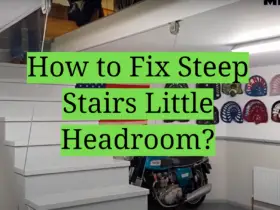

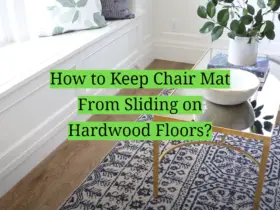



Leave a Reply